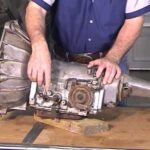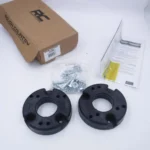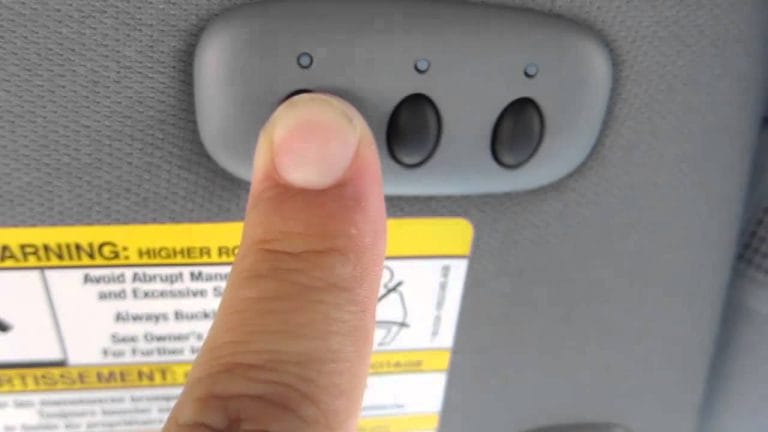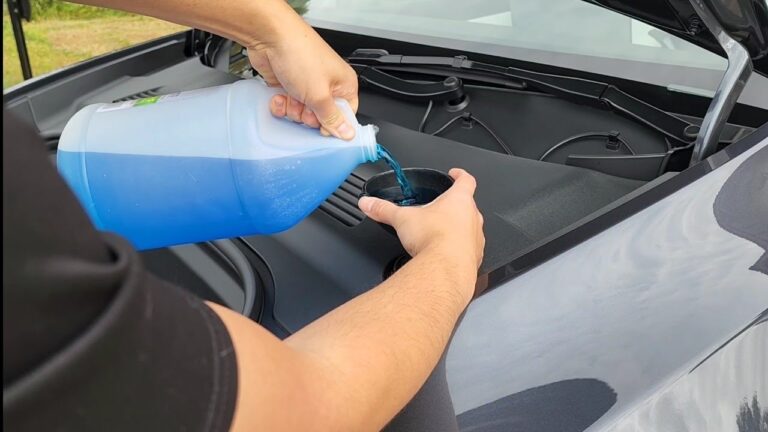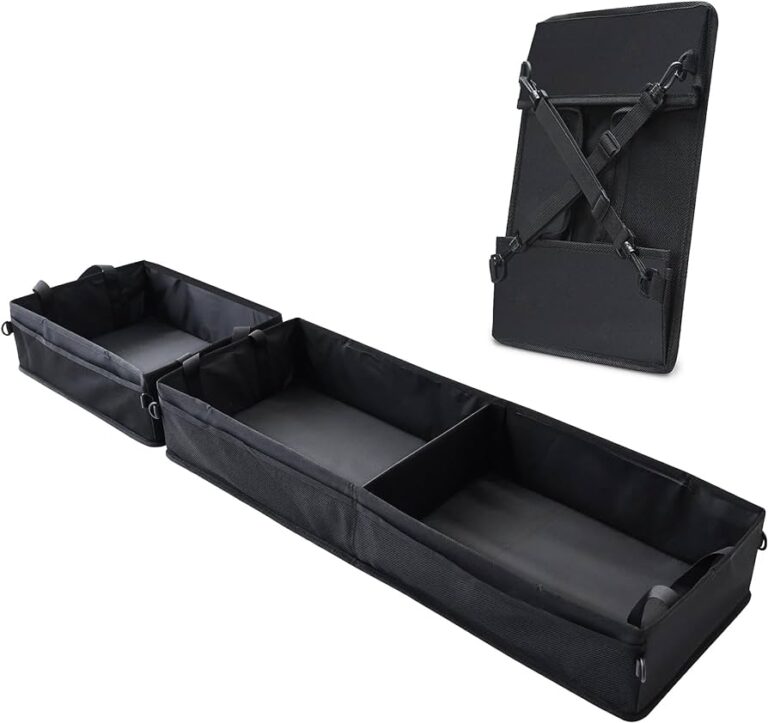Ford F150 Blower Motor Resistor Replacement Guide: [Step-by-Step]
Is the air conditioning in your Ford F-150 acting up? If your AC or heater fan is stuck on one speed or not working at all, you might be dealing with a faulty blower motor resistor.
This common issue can quickly turn your comfortable ride into an uncomfortable experience. But don’t worry, replacing the blower motor resistor in your Ford F-150 is simpler than you might think. You don’t need to be a seasoned mechanic to tackle this task.
In fact, with a little guidance, you can do it yourself and save money on repair costs. You’ll discover step-by-step instructions that make the process easy and stress-free. Stick with us to learn how to bring back the comfort to your truck’s cabin without breaking a sweat.
Key steps:
- Disconnect the Battery
- Locate the Blower Motor Resistor
- Remove the Glove Box (if needed)
- Unplug the Wiring Harness
- Remove the Old Resistor
- Install the New Resistor
- Reassemble Components
- Test the Blower Motor
Tools And Materials Needed
Gather all tools before starting. This will make the job easier. You will need a screwdriver. A wrench set is also important. Use a socket set for tight spots. A multimeter helps check connections. Safety gloves keep your hands safe. Don’t forget a flashlight. It helps you see in dark areas. A replacement resistor is a must-have. Always use the correct type. Keep a small container. It holds screws and small parts. This stops them from getting lost.
Having everything ready saves time. It also makes the work smooth. Double-check your list. Make sure nothing is missing.
![Ford F150 Blower Motor Resistor Replacement Guide: [Step-by-Step] 2 How to Replace Blower Motor Resistor Ford F150](https://roadmomentum.com/wp-content/uploads/2025/06/71ytD0AlfdL.jpg)
Locating The Blower Motor Resistor
The blower motor resistor is often found near the blower motor. It’s usually under the dashboard on the passenger side. Look for a small component with wires connecting to it. You might need to remove the glove box for easier access. Using a flashlight can help you see better. It’s essential to be careful with the wiring.
Refer to the vehicle’s manual for specific instructions. The resistor can be held by screws. You might need a screwdriver to take it out. Once located, double-check the connections before proceeding. Make sure the car is off for safety. Always wear protective gloves when handling car parts.
Safety Precautions
Replacing the blower motor resistor requires caution. Wear protective gloves to keep your hands safe. Use safety goggles to protect your eyes from dust. Make sure the engine is completely off. Disconnect the battery to prevent an electric shock. Keep tools organized to avoid any accidents. Work in a well-lit area for better visibility. Ensure the car is on a flat surface before starting. Always follow the user manual instructions. Handle parts gently to avoid damage. Make sure to keep kids away from the workspace. Check all tools before use to ensure they are in good condition.
Removing The Old Resistor
Start by turning off the engine. Then open the hood carefully. Find the battery.
Use a wrench to loosen the negative cable. Pull the cable away from the battery.
This will keep you safe from electric shocks.
Locate the glove box in your truck. Open it slowly. Remove the screws that hold it.
This lets you see the blower motor. The resistor is nearby. Look for a small box with wires.
Find the resistor’s connector. Press the tab and pull gently. It should come off easily.
Unscrew the screws that hold the resistor. Carefully pull the resistor out. Keep it safe for reference.
Installing The New Resistor
Replacing the blower motor resistor in a Ford F-150 involves removing the old unit and installing the new resistor securely. Ensure all connections are tight to restore proper airflow and maintain vehicle comfort.
Positioning The Resistor
Place the new resistor in the correct spot. Check the alignment with the other parts. Make sure it sits firmly in its place. Avoid touching the metal connectors with your fingers. This prevents damage.
Securing Connections
Attach wires to the resistor. They should click in securely. Double-check each connection. Make sure they are tight. Loose wires can cause problems. Use a screwdriver to fasten any screws. Ensure every part is firmly attached. Inspect the setup. Look for any loose or missing parts.
![Ford F150 Blower Motor Resistor Replacement Guide: [Step-by-Step] 3 How to Replace Blower Motor Resistor Ford F150](https://roadmomentum.com/wp-content/uploads/2025/06/61-cgZhHCgL.jpg)
Testing The Replacement
Replacing the blower motor resistor in a Ford F-150 involves disconnecting the battery and removing the glove box. After locating the resistor, unscrew it and replace it with a new one, ensuring all connections are secure. Test the new installation to confirm the blower works properly.
Reconnecting The Battery
First, reconnect the car battery. Make sure the terminals are tight. Loose connections can cause problems. Check the battery cables for any damage. Replace them if needed. A secure connection ensures the motor works well. Turn on the ignition. Listen for any unusual sounds. Everything should sound normal.
Ensuring Proper Function
Turn on the blower motor. Check all the fan speeds. Each setting should work smoothly. Feel the air from the vents. It should be strong and steady. If the air is weak, check the resistor again. Make sure all connections are correct. Test the motor for a few minutes. Ensure it stays consistent. This confirms a successful replacement.
Troubleshooting Common Issues
Blower motor resistor problems can cause the fan to stop working. Sometimes, the fan only works at one speed. This is a sign of a faulty resistor. Check connections for loose or damaged wires. A multimeter can test the resistor’s current flow. If the resistor is bad, it won’t show any reading. Replace the resistor if it’s not working. Inspect the motor for signs of wear. A noisy fan might mean the motor is failing. Debris can block the fan and cause overheating. Remove debris to prevent damage. Regular maintenance helps keep the blower system in good shape.
![Ford F150 Blower Motor Resistor Replacement Guide: [Step-by-Step] 4 How to Replace Blower Motor Resistor Ford F150](https://roadmomentum.com/wp-content/uploads/2025/06/hq720-1.jpg)
Maintenance Tips
Inspect the wiring connections regularly. Loose wires can cause issues. Make sure they are tight. Look for any signs of wear or damage. Replace damaged wires quickly.
Keep the area around the blower motor clean. Dust can clog the system. Use a soft brush for cleaning. Avoid using water near the motor. Regular cleaning keeps it running smoothly.
Test the resistor to ensure it works. Use a multimeter for testing. Follow the instructions carefully. Replace it if the readings are wrong. Proper testing helps maintain performance.
FAQ
What Tools Are Needed To Replace The Resistor?
To replace the blower motor resistor on a Ford F-150, you’ll need basic tools: a socket wrench, a screwdriver, and pliers. Ensure you have a replacement resistor compatible with your F-150’s model year. Having a repair manual handy can also provide guidance and ensure a smooth process.
How Do I Locate The Blower Motor Resistor?
The blower motor resistor is usually found under the dashboard, near the passenger side. It’s connected to the blower motor. Accessing it may require removing panels or the glove box. Consult your vehicle’s manual for precise location details to avoid unnecessary dismantling of components.
Why Should I Replace A Faulty Resistor?
A faulty blower motor resistor can cause issues with fan speeds and air flow. It may lead to inconsistent heating or cooling in your vehicle’s cabin. Replacing it ensures proper climate control functionality, contributing to comfort and the efficient operation of your Ford F-150’s HVAC system.
How Long Does Replacement Usually Take?
Replacing a blower motor resistor typically takes about 30 minutes to an hour. This depends on your experience and vehicle model. Ensure you have all the necessary tools and parts before starting. Consulting a repair manual can expedite the process and help you avoid common pitfalls.
Conclusion
Replacing the blower motor resistor in a Ford F-150 is simple. First, gather the necessary tools and parts. Then, follow step-by-step instructions carefully. This ensures a smooth and quick replacement process. A functioning blower motor improves comfort during drives. Regular maintenance helps avoid future issues.

![Ford F150 Blower Motor Resistor Replacement Guide: [Step-by-Step] 1 How to Replace Blower Motor Resistor Ford F150](https://roadmomentum.com/wp-content/uploads/2025/06/how-to-replace-blower-motor-resistor-ford-f150.jpg)



